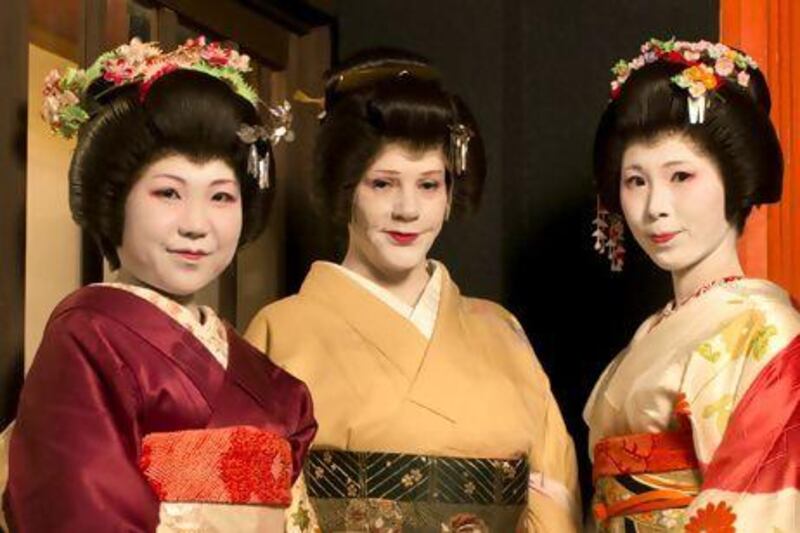Her carefully wrapped kimono reveals nothing except graceful poise, and only rose-red lips and sultry eyeshadow punctuate her pristine white make-up. So far, she could be one of thousands of girls who spend years perfecting the Japanese tradition of being a geisha, but Sayuki is different in many ways.
In 2007, she became the one of a handful of foreigners to be accepted as a geisha and, since then, has achieved a number of firsts, including becoming the first geisha to lecture at university in geisha studies.
Who is Sayuki?
Sayuki began her life as Fiona Graham. An inquisitive Australian, she went on an exchange programme to Japan at the age of 15 and ended up completing her school and university studies there.
Upon returning to Australia with an MBA in anthropology, she began working as a freelance film director. Still fascinated with Japanese culture, she decided to make a film about the long and laborious process of becoming a geisha and volunteered herself as the case study.
“I had to do everything that any other geisha would do,” she explained. “I started at the bottom of a strict hierarchy, doing everything my geisha mother told me to do. I immediately realised it wasn’t possible to film all that, so I decided to concentrate on being a geisha first and make the film later.”
Six years later and the film is not yet made but Sayuki, who now never uses her other name, says it is still an ambition.
What is a geisha?
The tradition of the geisha goes back 400 years and historically was an extremely secretive part of Japanese society. The word geisha means artist and all geisha are accomplished artists, usually musicians or dancers who are called to entertain, usually at private gatherings or in Japanese tea-houses, where they perform at banquets.
“Even in the West there used to be a tradition of private entertainment,” explains Sayuki, who will not reveal her age because geisha tradition does not allow it. “In the days of Bach and Mozart, they didn’t sit around, they went to houses to perform. That tradition disappeared in the West but is still very much alive in Japan.”
Sayuki plays the flute and the shamisen, a Japanese flute, and usually works with other geishas who dance while she plays.
“How many geisha are called depends on the customer’s budget,” she says. “There is usually a mix of older geisha and young ones. The older geisha add so much to a banquet because they are skilled at conversation.”
How does a foreigner become accepted?
After spending a year training in a geisha house in Tokyo’s Asakusa district, Sayuki made her debut in 2007 with her geisha name that means “transparent happiness”.
“In the beginning, I thought there might be a crusty old group of men who were really opposed to the idea of a foreign geisha but, actually, they were really supportive of me. That was encouraging,” she says.
After two years, her geisha mother retired and Sayuki founded her own geisha house, where she is now helping to train other young girls.
“It is not possible to just turn up in Japan and become a geisha,” Sayuki explains. “I grew up there so I know the language but it is not just the language, it is much deeper than that.” But she still faces challenges. “The tradition is hundreds of years old – it is kind of like living in the Shakespearean world. The language is outdated and hard even for a native speaker.”
Why did she do it?
“One of the reasons was to keep the tradition alive,” says Sayuki. “The question is, how do you retain traditional culture in the modern age without diluting it?”
Now she is trying to establish an international interest in the art by travelling and attracting foreign clients. She will be in Dubai from today until Tuesday and has just returned from performing at a wedding in Greece.
“Geisha don’t travel that much and I am keen on introducing Japanese culture to the rest of the world. Whenever I travel alone, I hold talks and show footage. I think people don’t realise that they can enjoy the art of geisha outside Japan, but it is possible and I am that point of contact. It is a beautiful art and I hope that I can help to keep it alive.”
Sayuki will be in Dubai tomorrow, Monday and Tuesday. To contact her, visit www.sayuki.net
Follow us
[ @LifeNationalUAE ]
And follow us on Facebook for discussions, entertainment, reviews, wellness and news.





